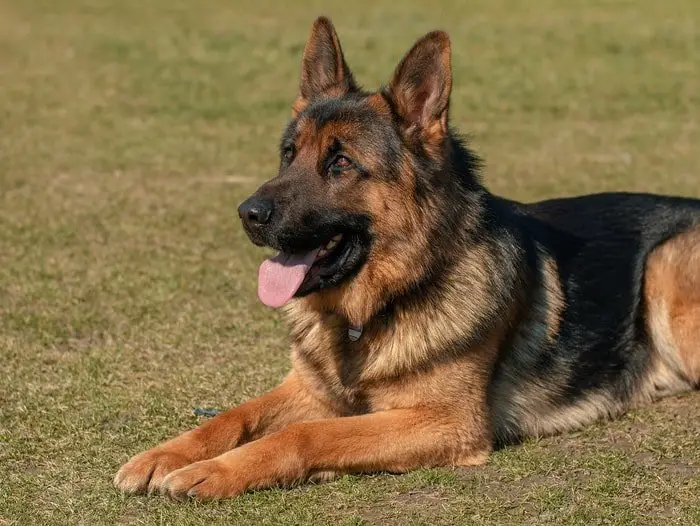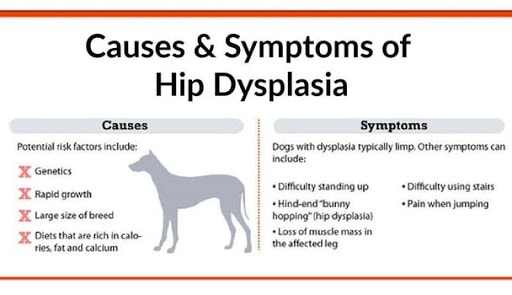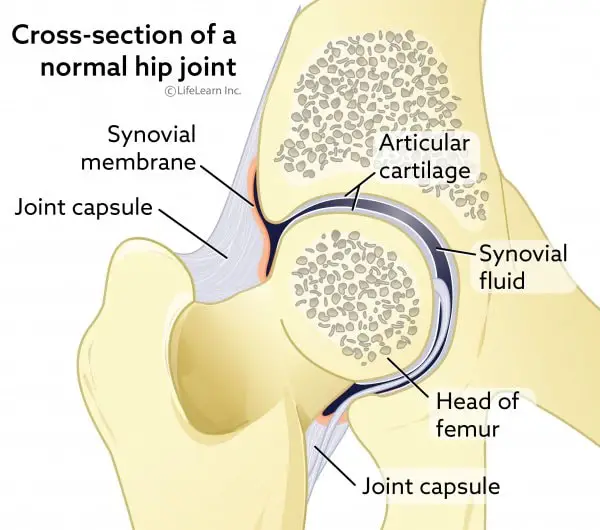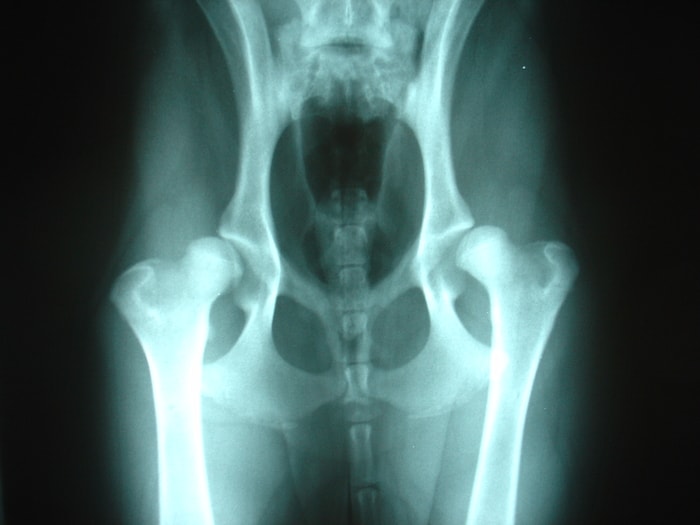Hip Dysplasia is a developmental disorder that is more common in large and giant breeds of dogs. It is a painful condition, and Hip Dysplasia may occur in any size or breed of dogs. The hip joint of dogs is like a ball and socket joint, and it occurs during growth. The result of the disease is the looseness of the joint (laxity), osteoarthritis, and degenerative joint disease. The disease is a hereditary cause, and although any dog can be affected.
Which Breeds are Prone to Canine Hip Dysplasia?
Hip dysplasia is more prone to bigger dogs because of their size, and the condition may affect dogs of all sizes. The breeds are includes:
- German shepherd.
- Newfoundland.
- Labrador Retriever.
- Saint Bernard.
- Golden Retriever.
- Rottweiler.

Causes of Hip Dysplasia in Dogs
The cause of hip dysplasia in dogs is unknown, but it is a hereditary disease and considered to be a polygenic trait with determined expression by genetic, environmental factors, diet, growth rate, exercise, muscle mass, and hormones.

Symptoms of Canine Hip Dysplasia
Some pets start to show signs of hip dysplasia at the beginning of the early stage, and others can show it in conjunction with osteoarthritis as the dog age. The symptoms may vary depending on the severity of the disease, and the symptoms include:
- Decreased activity level.
- Joint discomfort is seen at two stages of the afflicted dog’s life, between four and 12 months of age and over five years.
- Affected dogs will often bunny hop (run with both hind limbs moving together).
- Dogs prefer to sit rather than stand.
- Decreased motility and range of motion.
- Posture abnormality to the toilet.
- Changes in eating trends and behavior.
- Lameness in the hind end.
- Loss of thigh muscle mass.
- Pain and weakness.
- Stiffness and limping when walking.
- Enlargement of the shoulder muscle.
- Unequal leg lengths.

Diagnosis Hip Dysplasia in Dogs
Your vet diagnosed Hip Dysplasia with the help of physical and radiographic examination. Comparing a lame limb to the contralateral limb and observing your dog ambulate at different gaits and on different surfaces, as well as on steps, can be helpful during your dog’s physical examination. When your pets are suspected of having hip dysplasia should be radiograph as soon as possible.

Hip Dysplasia Treatment in Dogs
The treatment of hip dysplasia may vary widely depending on the age of the dogs, the pathologic condition of the joint, the expectation of the function, and the surgical skill of your clinician. Conservative management consists of restricted exercise, weight loss, and judicious use of analgesics and NSAIDs. Nutriceuticals have gained favor as an adjunct therapy for DJD and play an increased role in conservative management.
For your immature pets, pectineal myectomy, pelvic osteotomy, and femoral osteotomy are procedures frequently performed. In contrast, the femoral head and neck excision and total hip replacement are most often performed in mature dogs. Except for pectineal myectomy and femoral head and neck excision, these surgeries you vets require both special equipment and training.